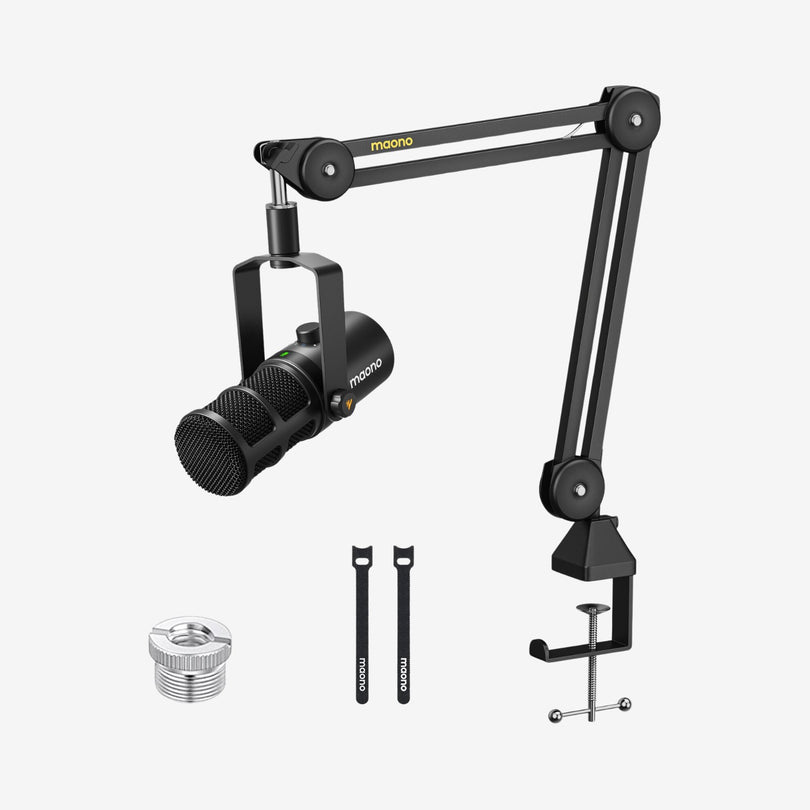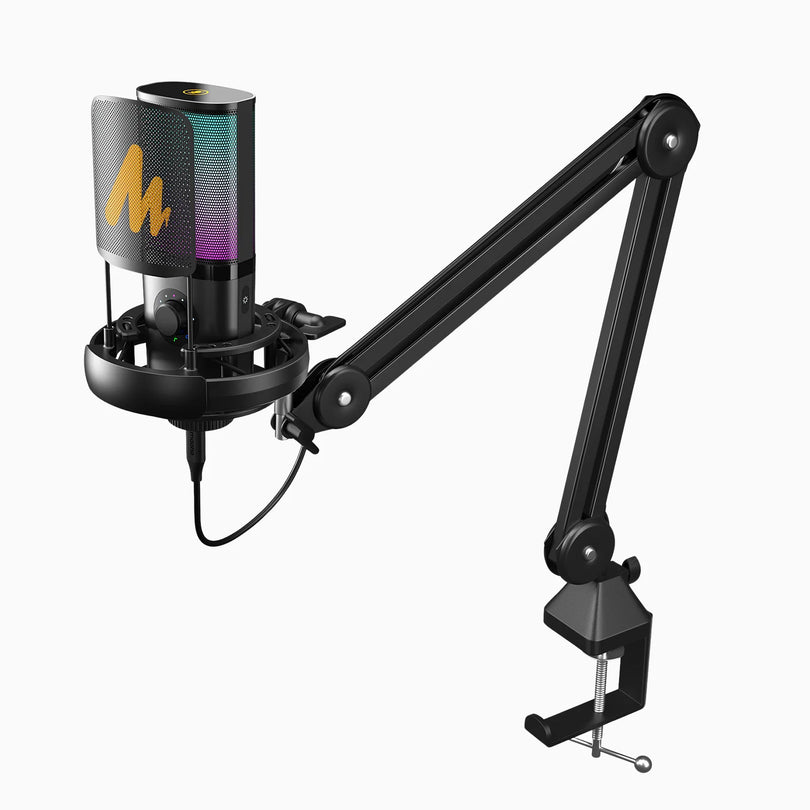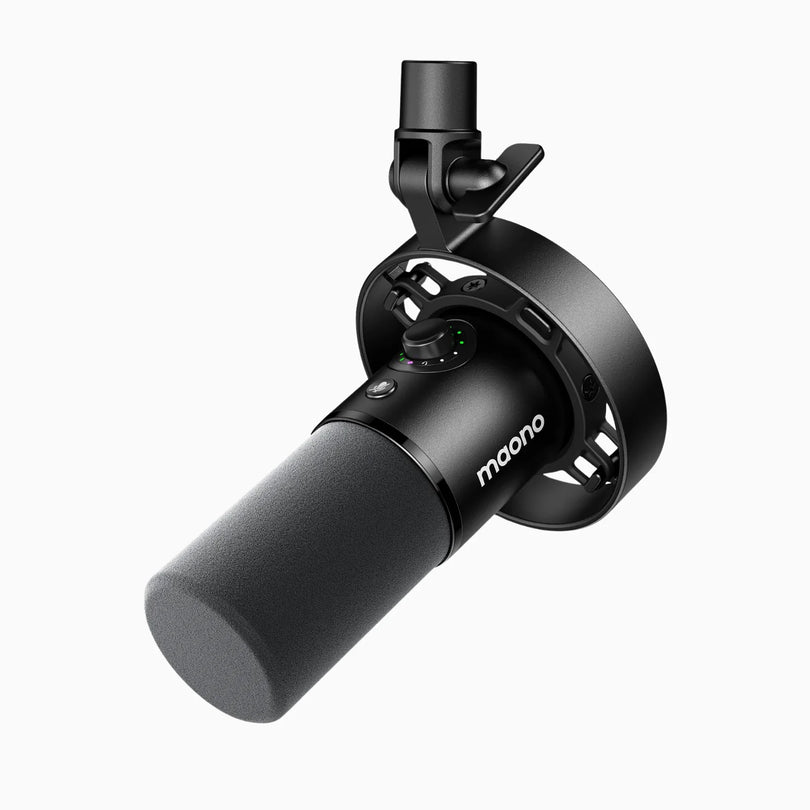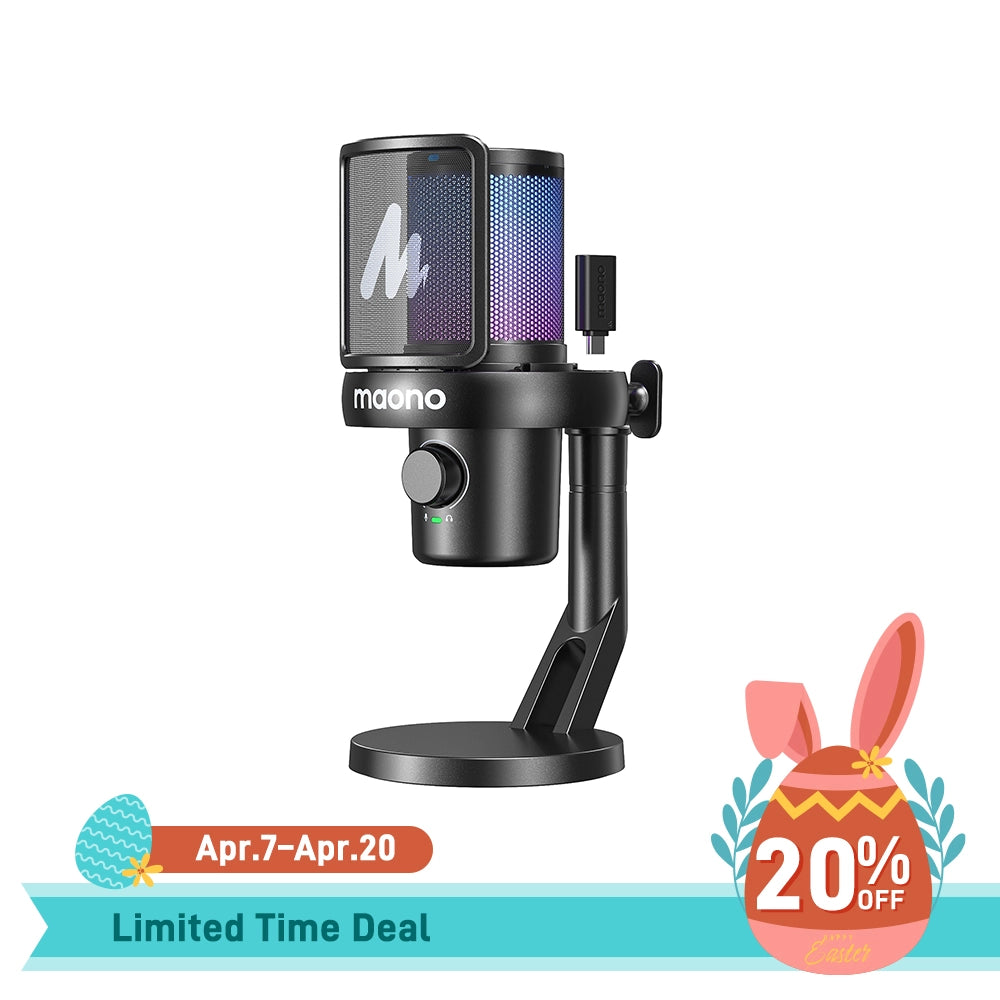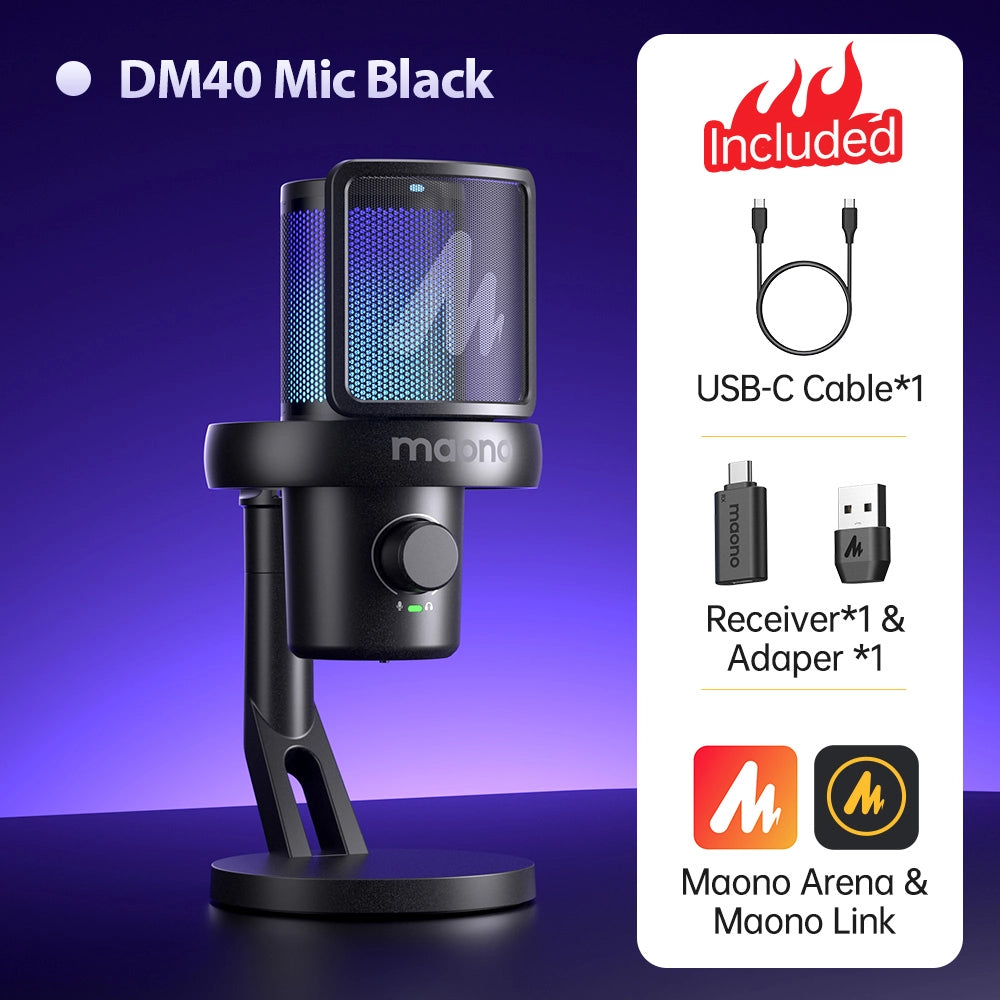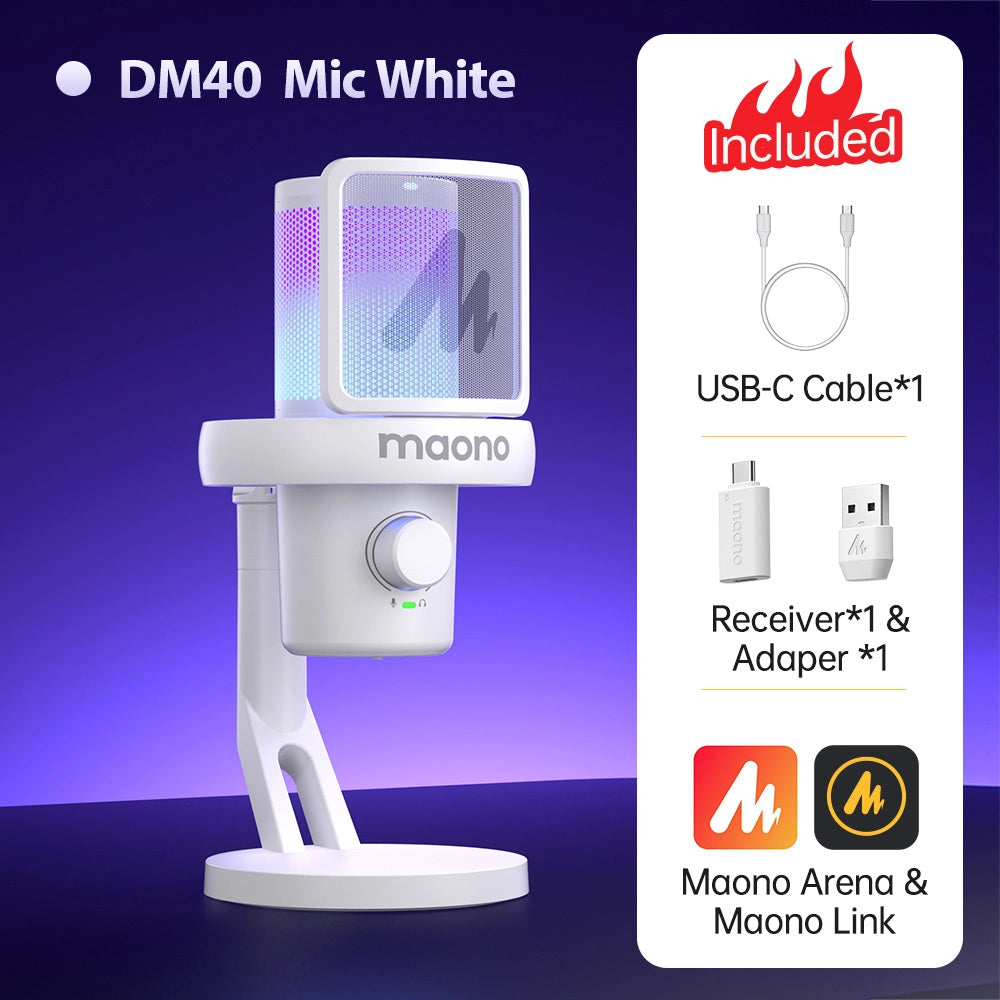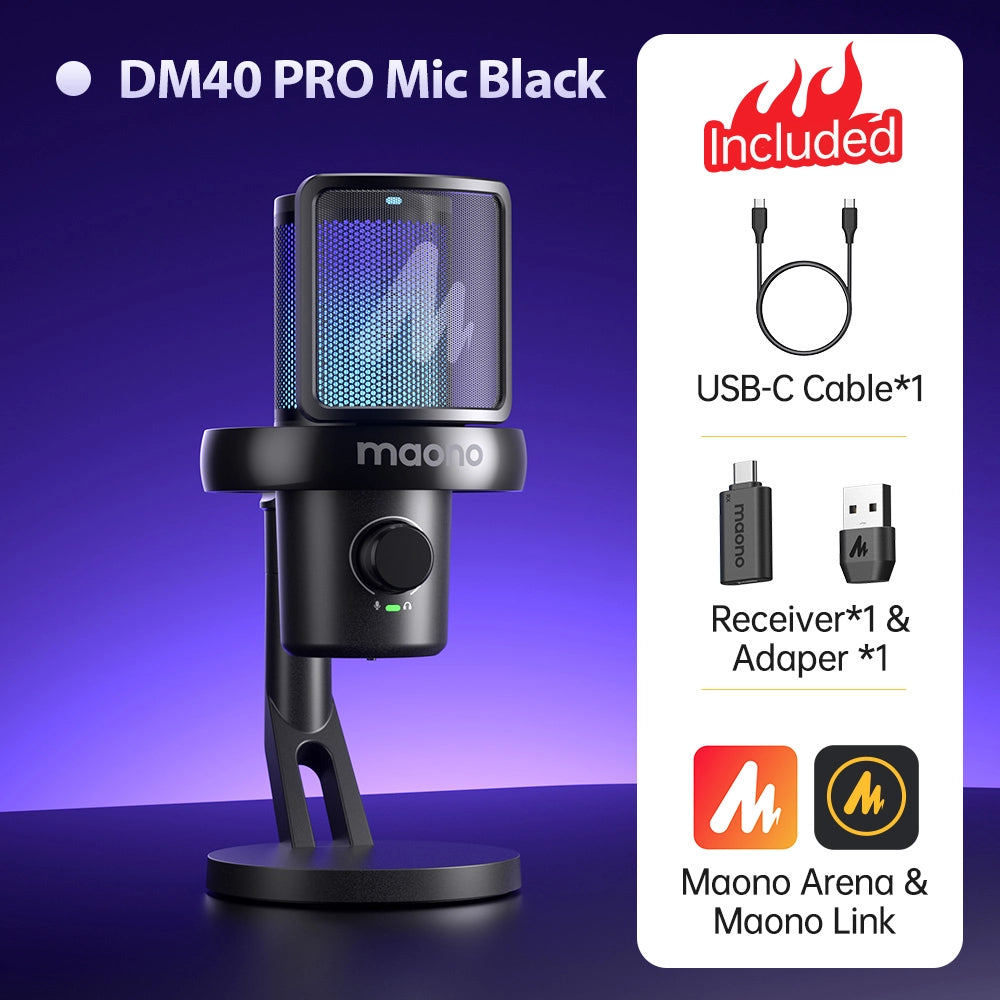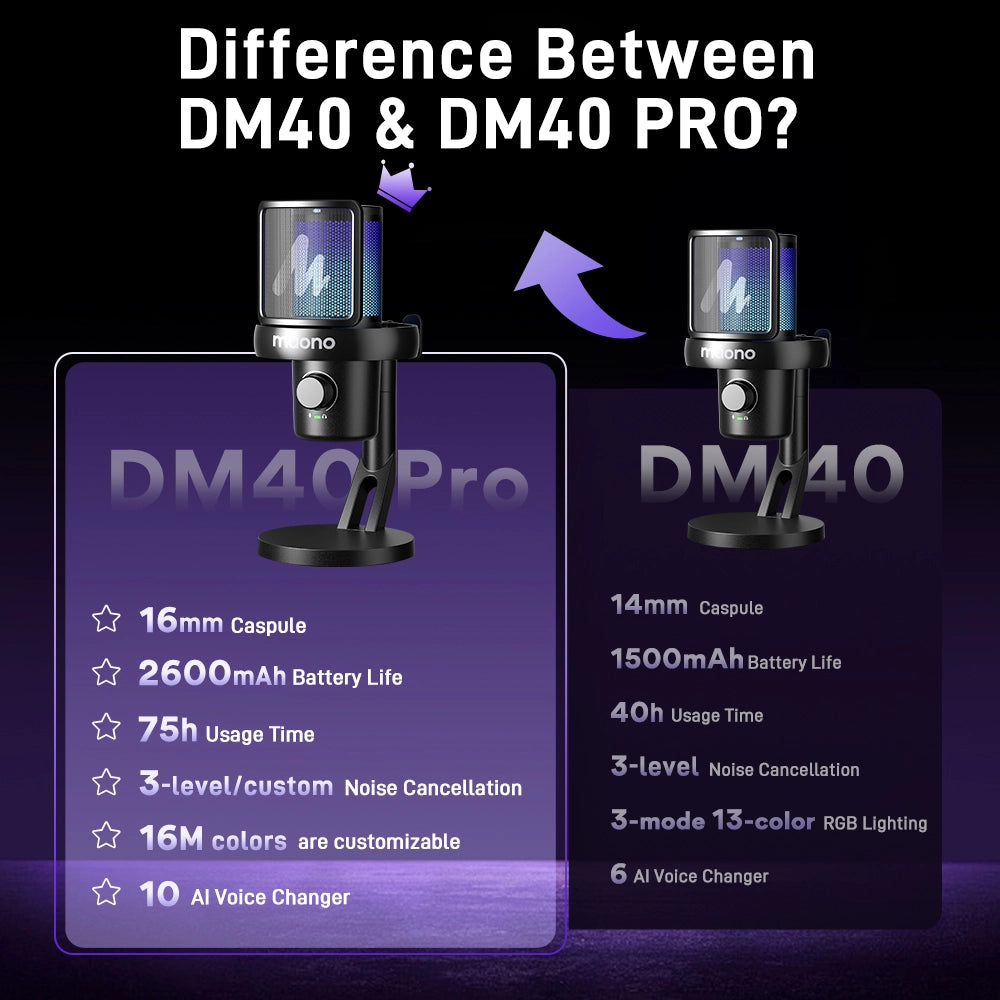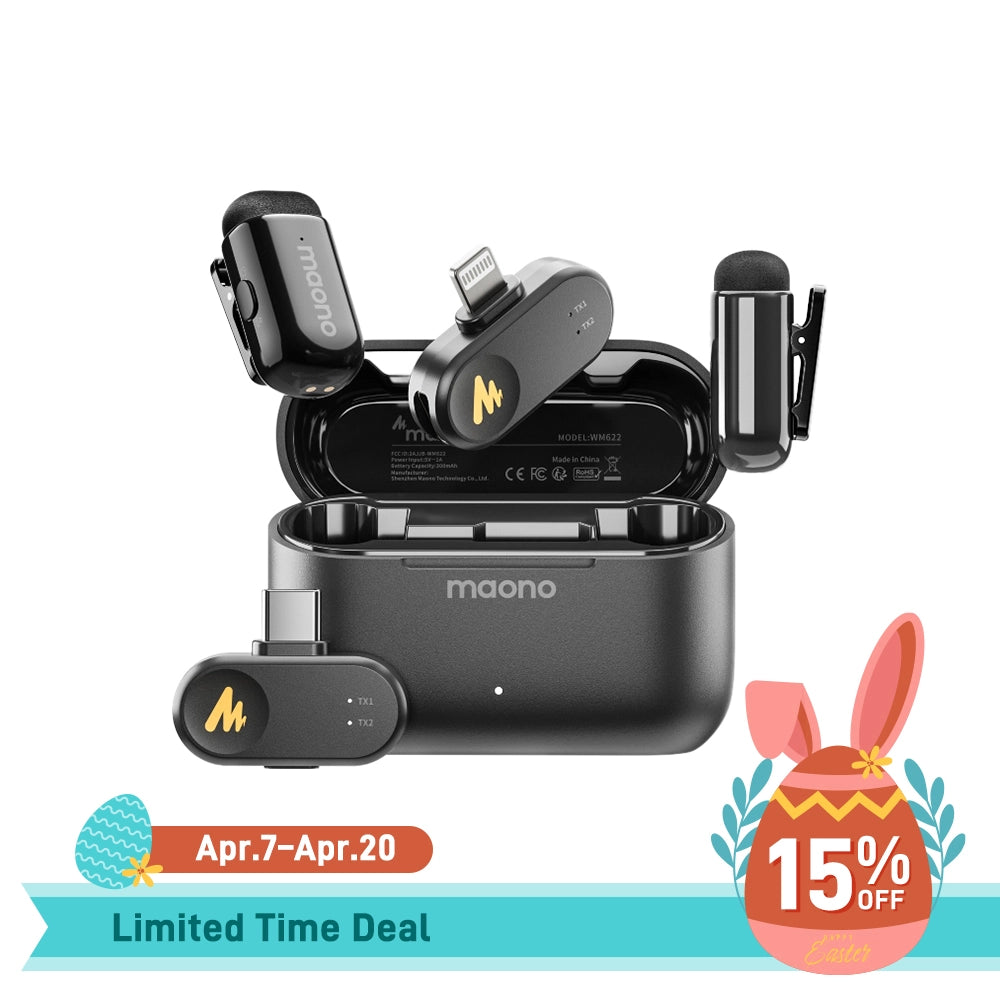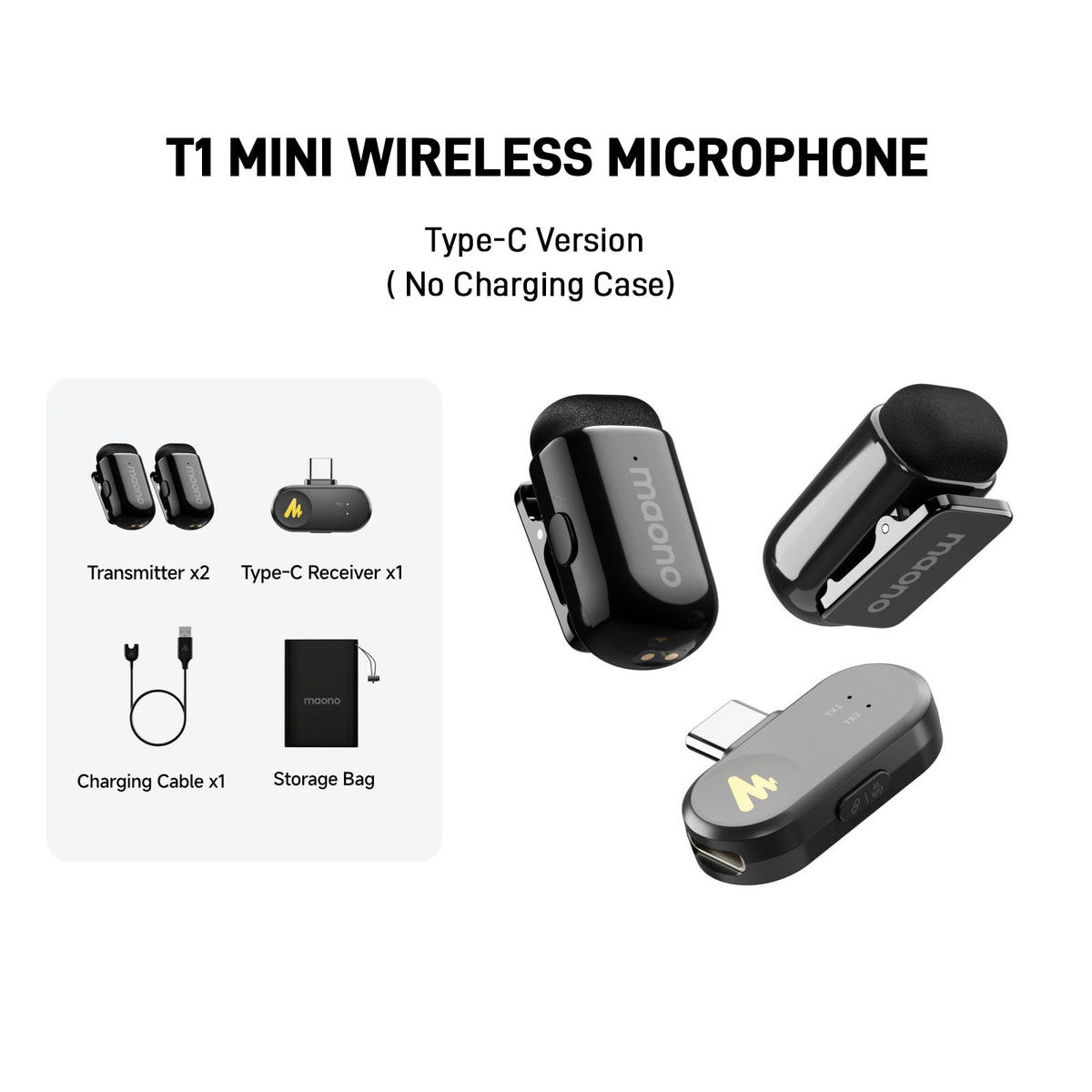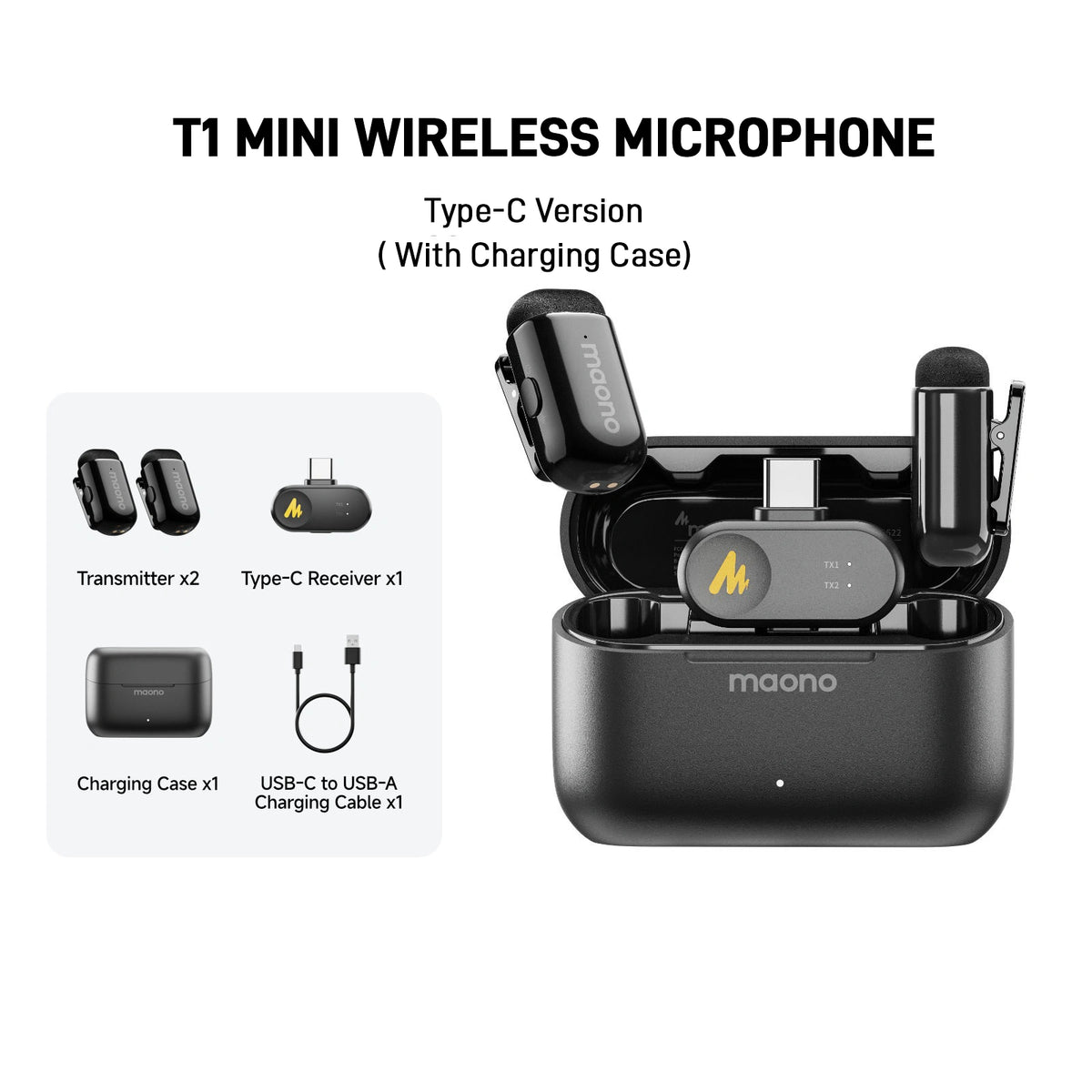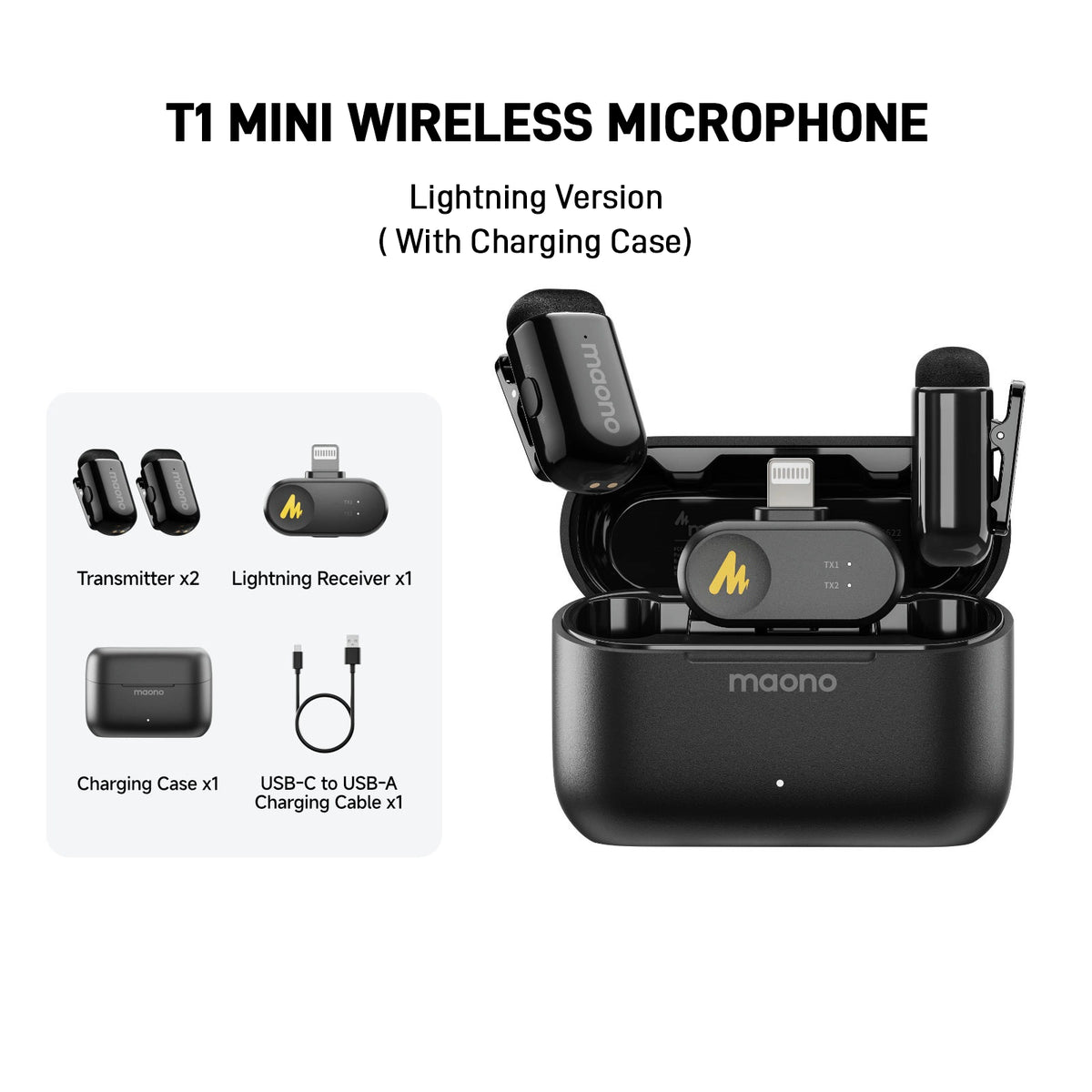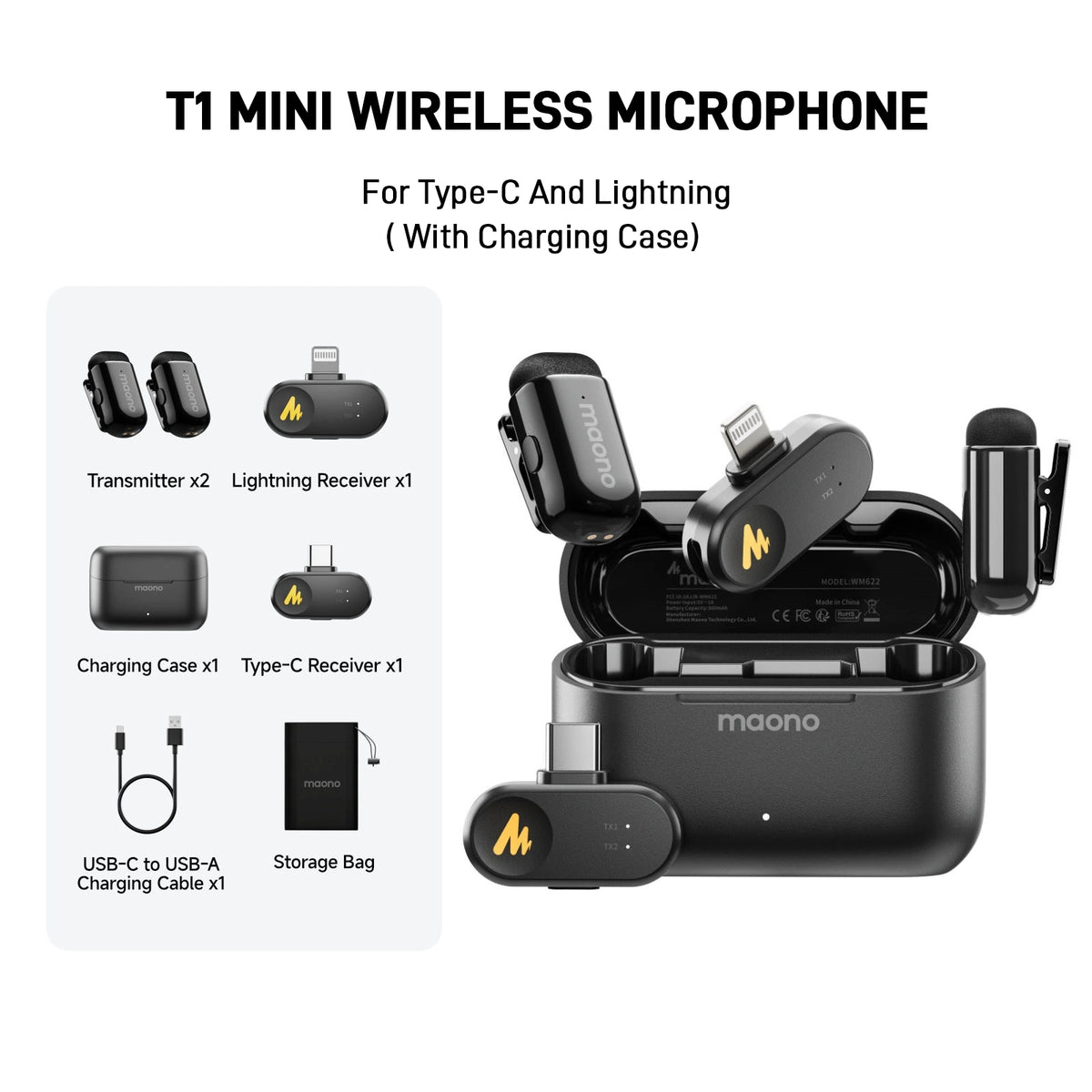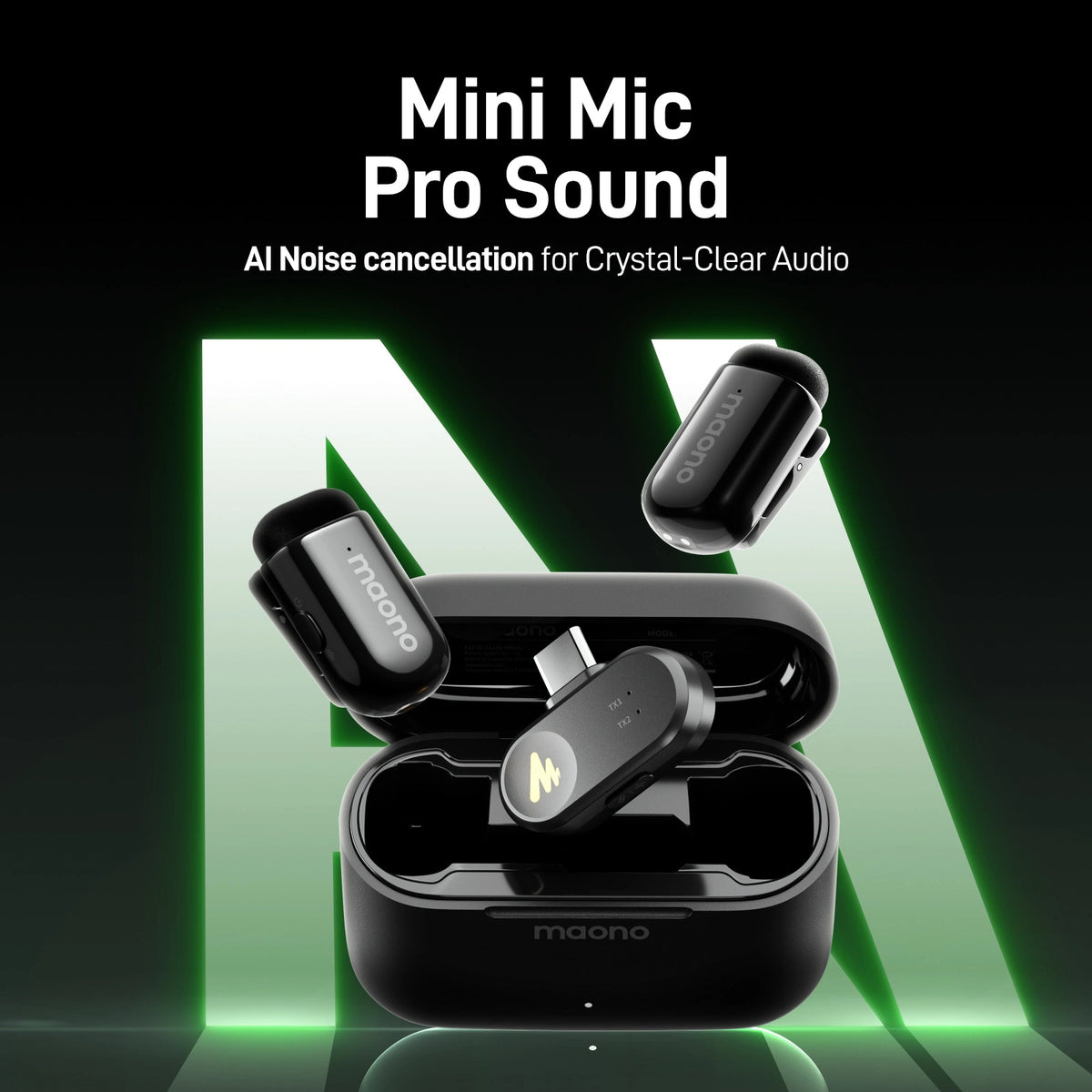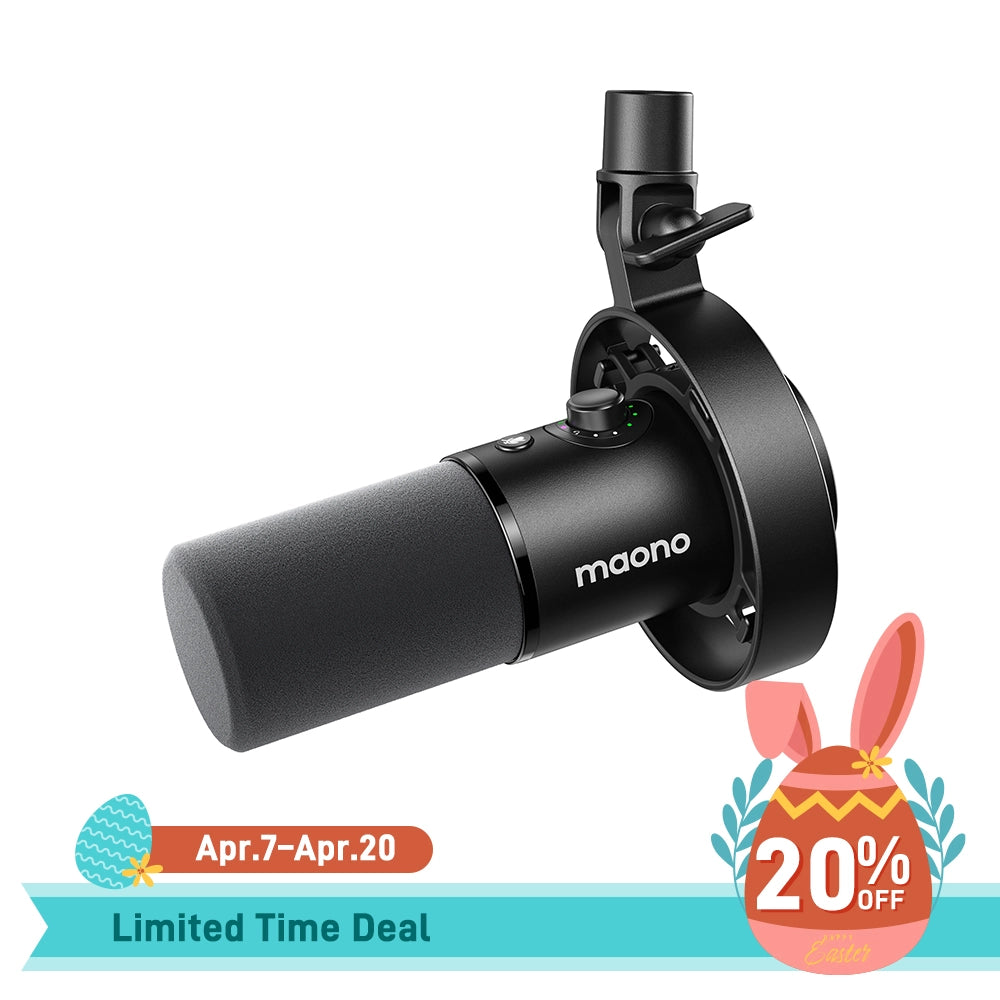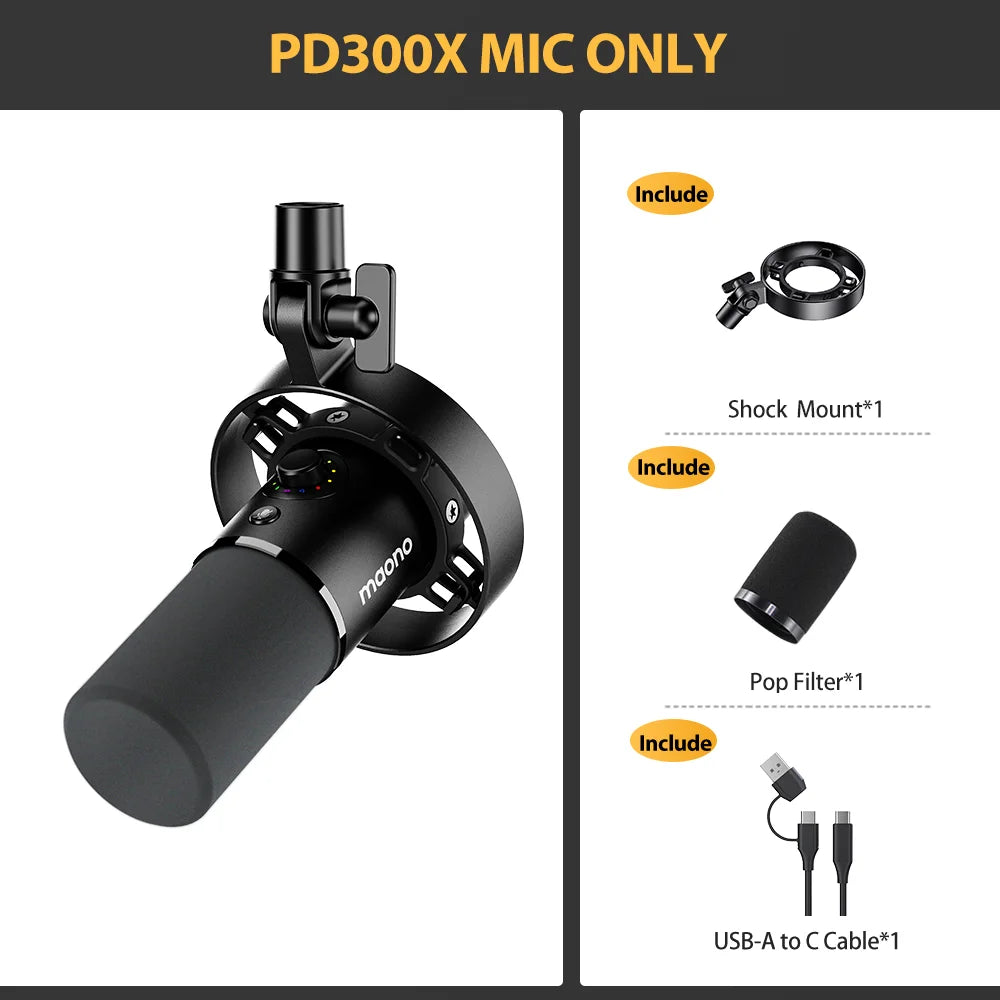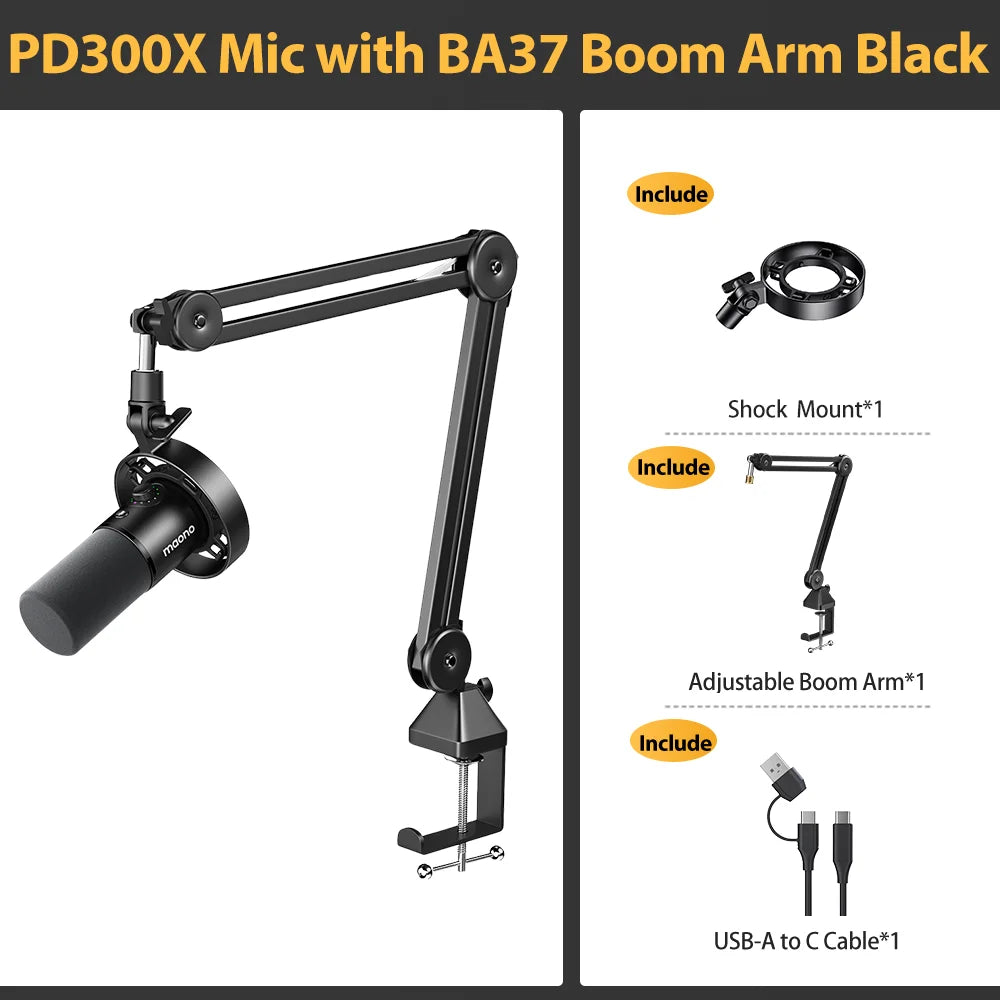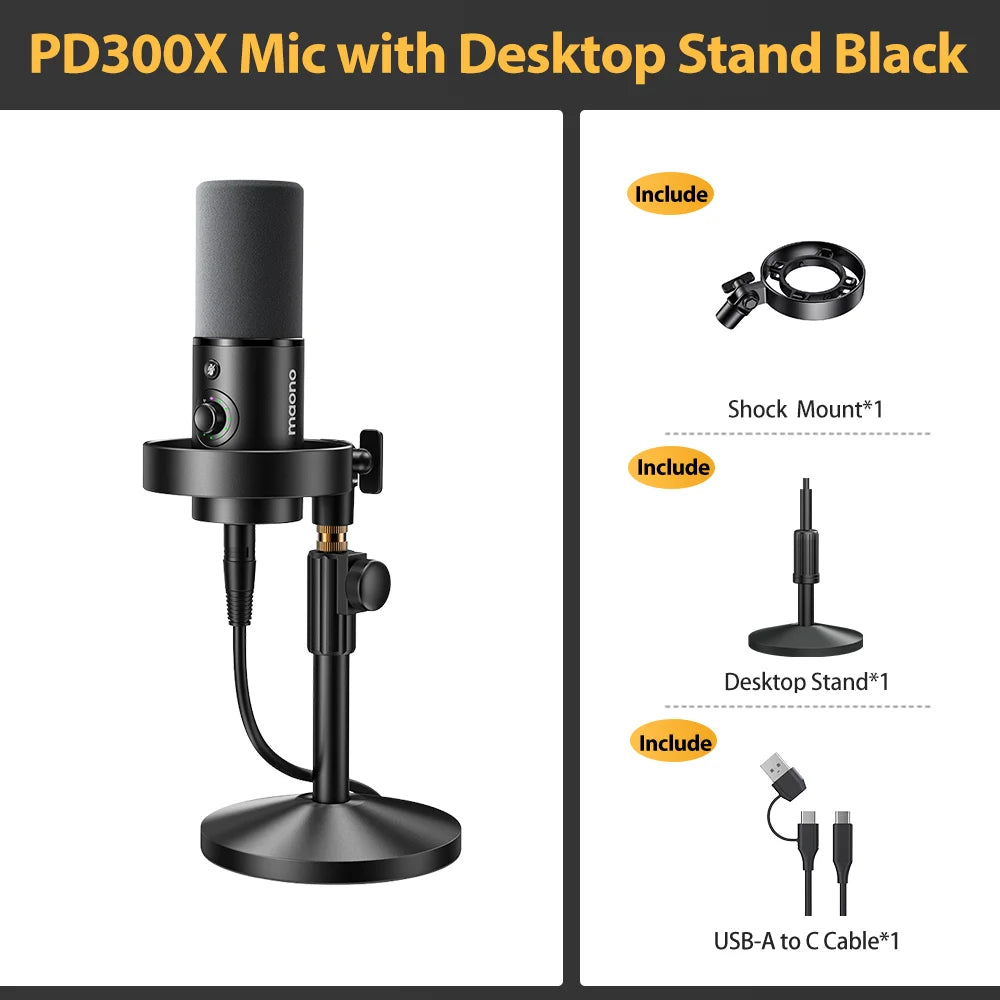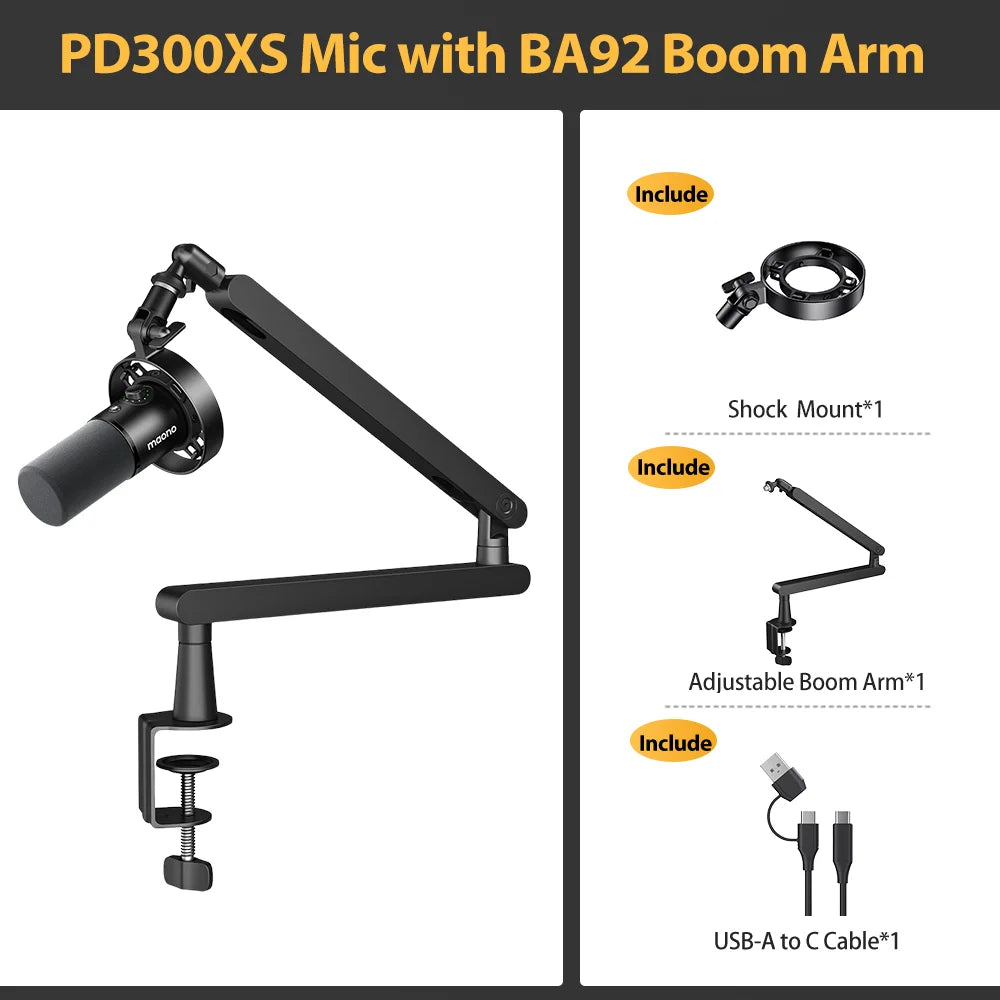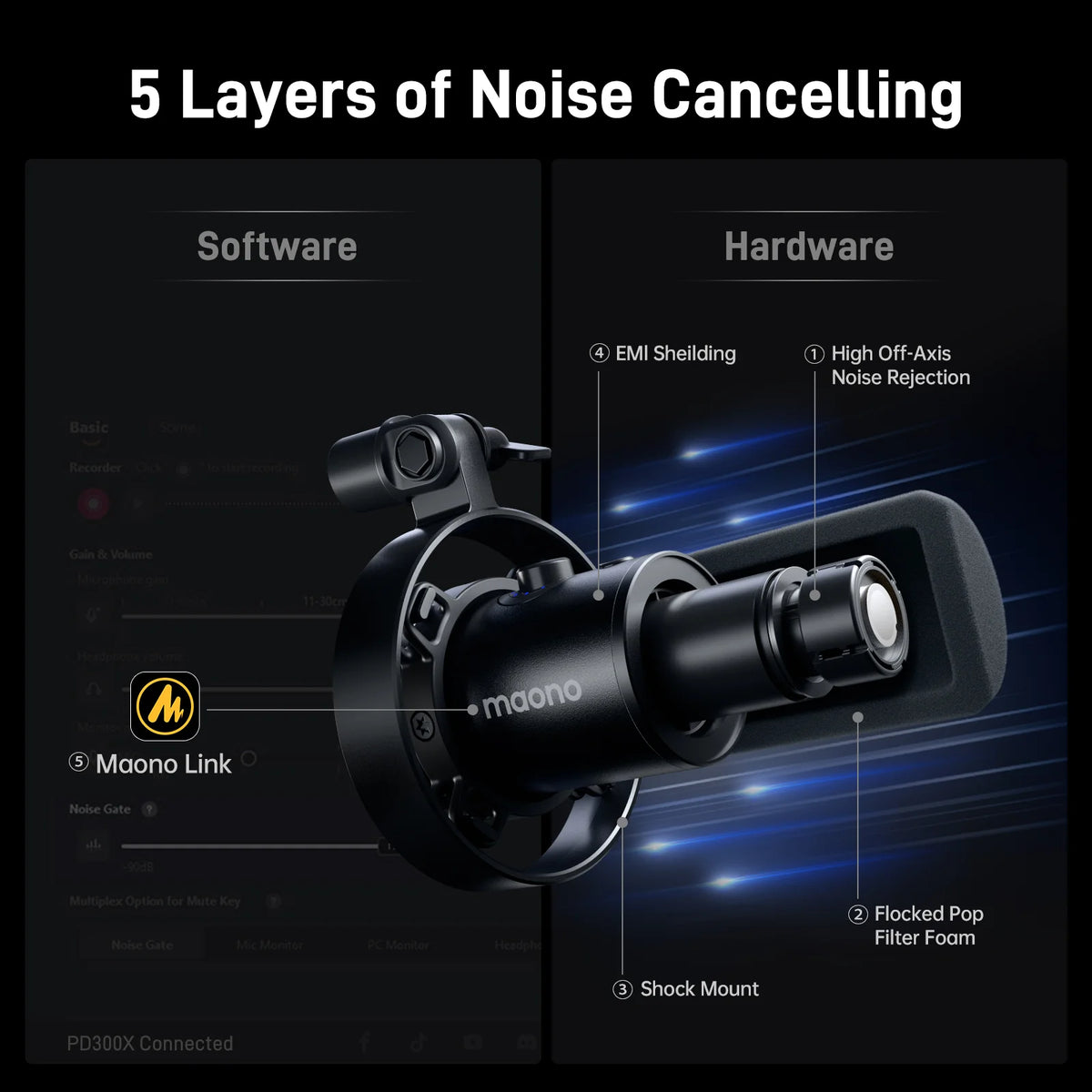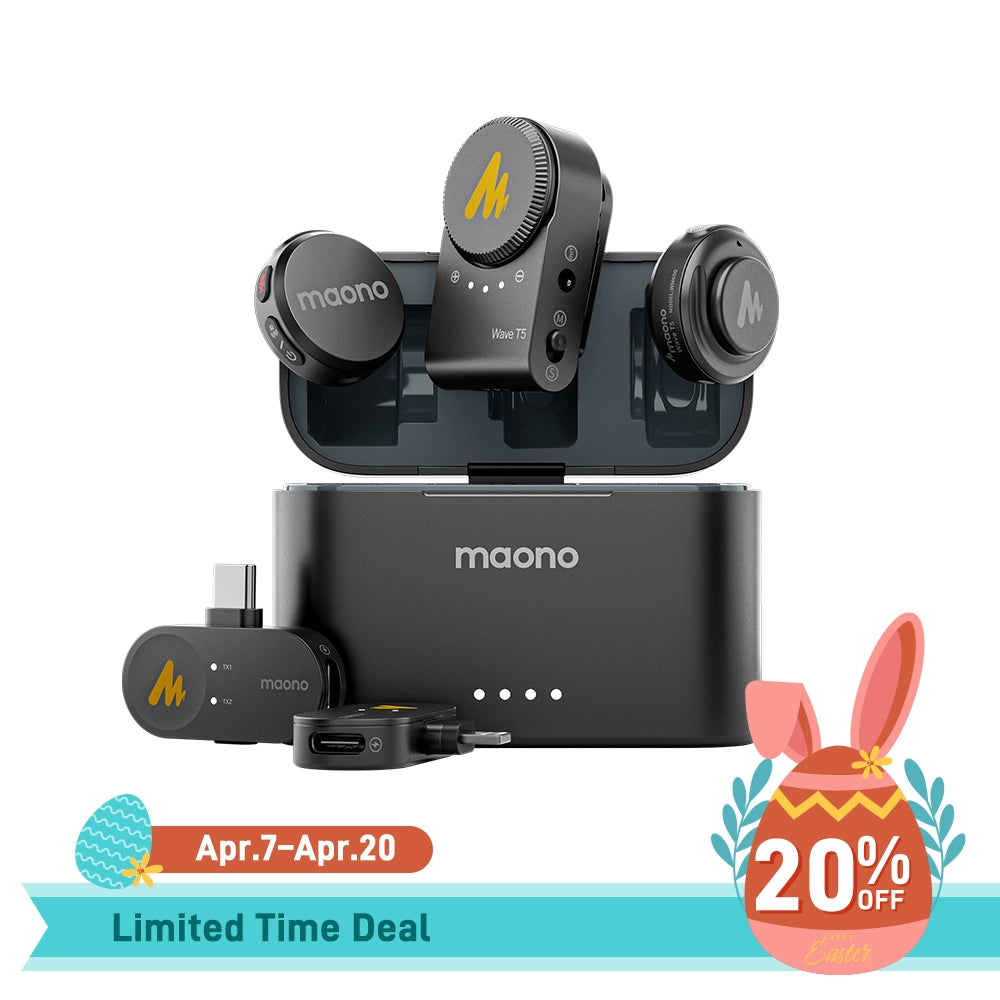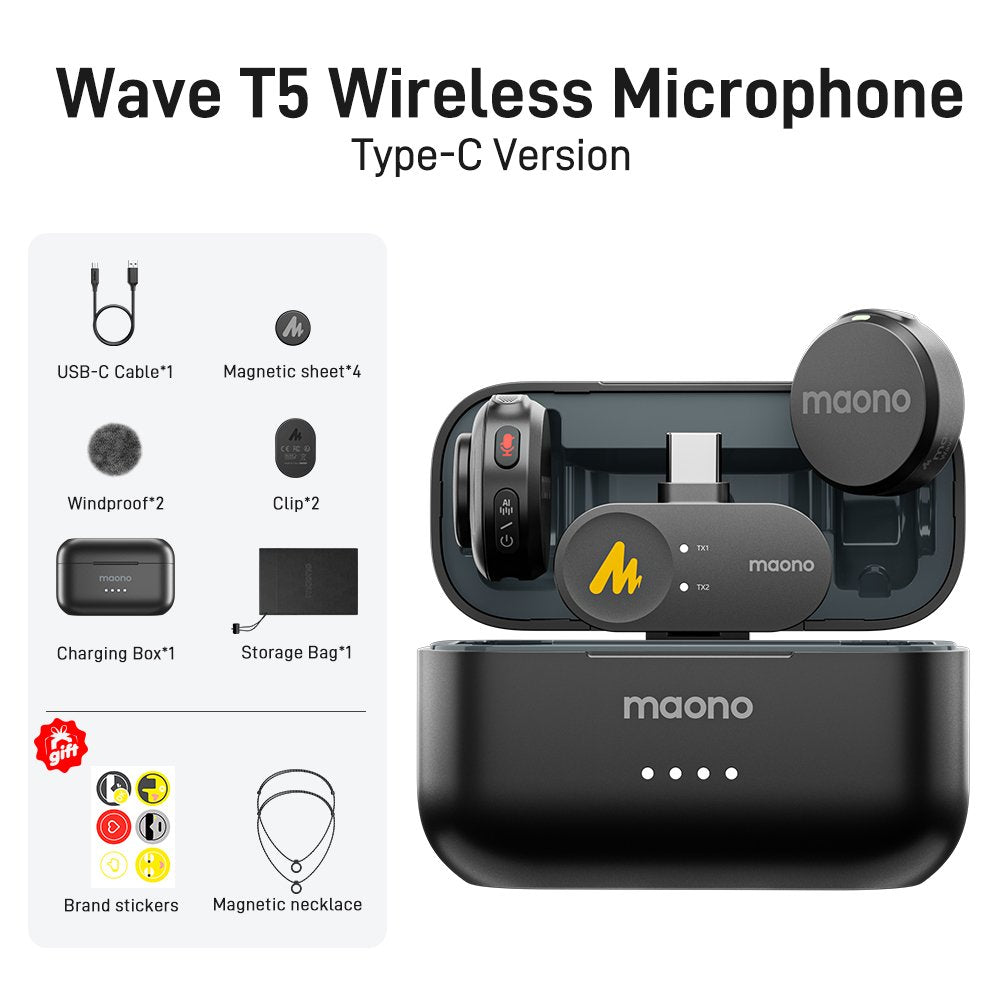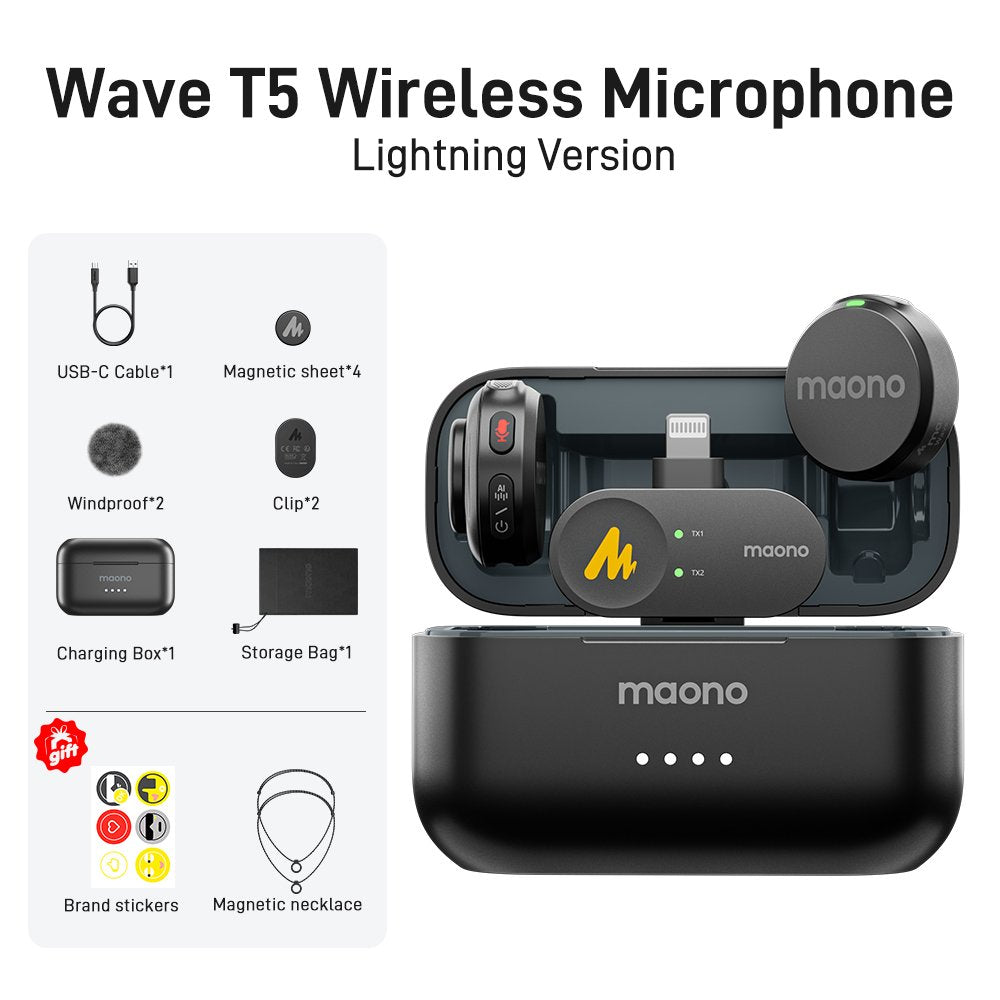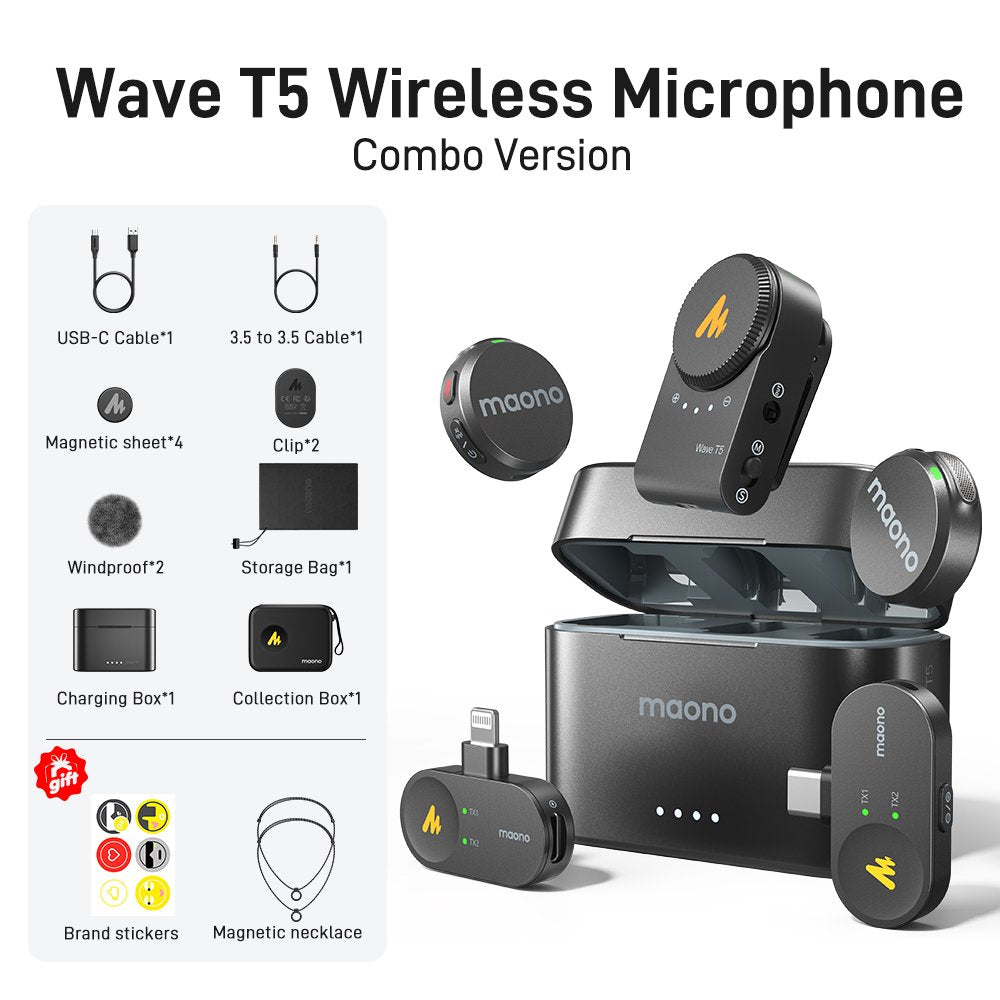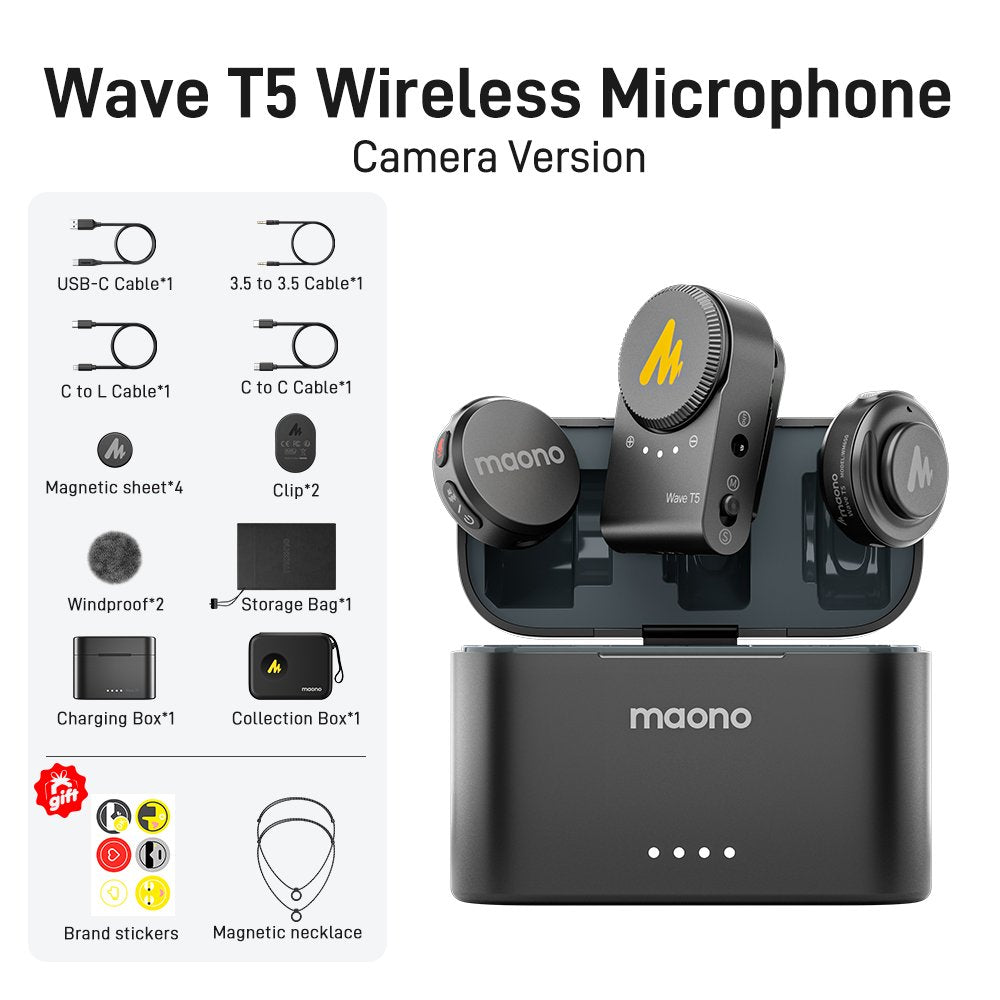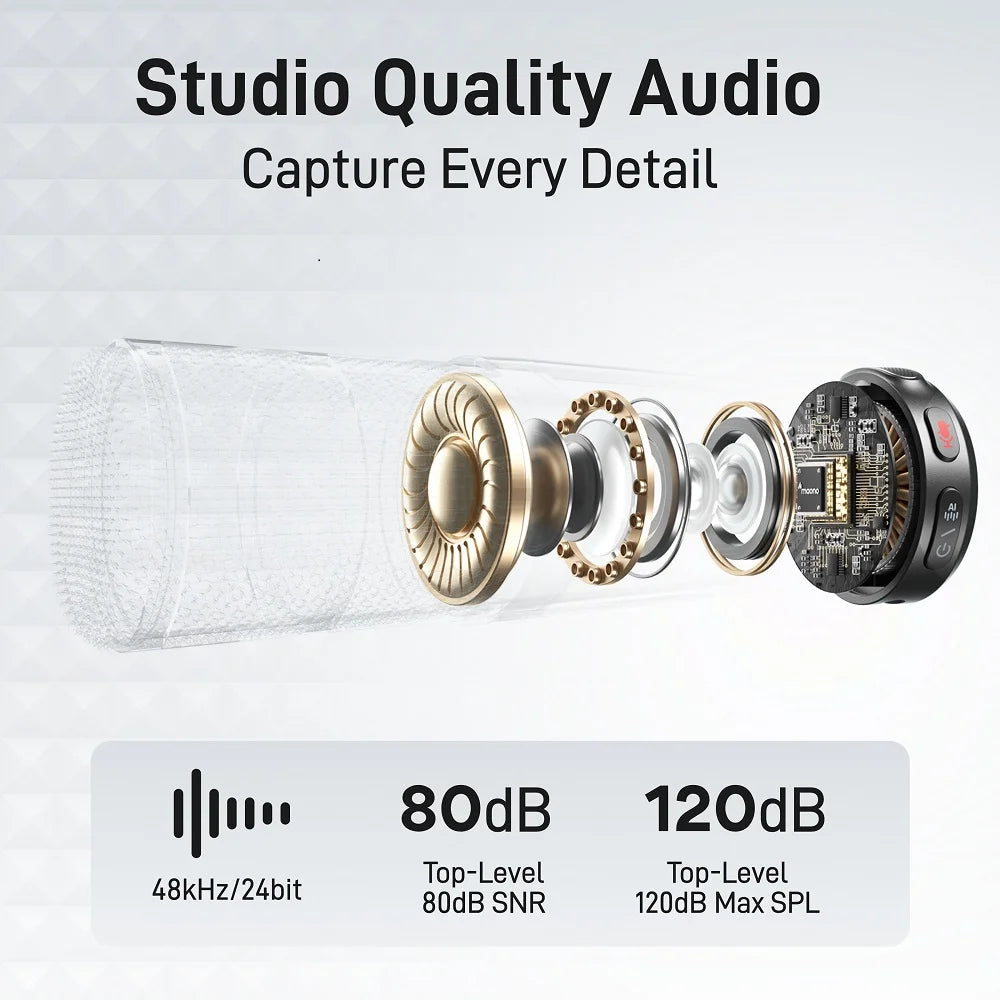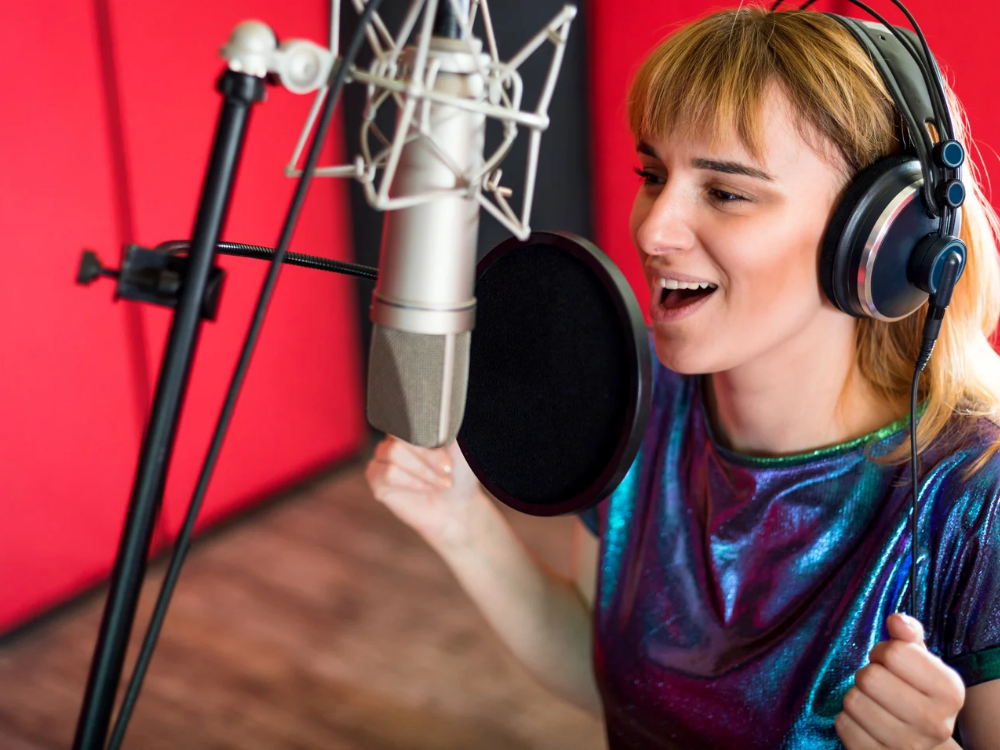When it comes to choosing the right microphone for your recording needs, the debate often narrows down to two types: dynamic cardioid mics and condenser cardioid mics. Both have unique characteristics and are suited to different recording environments and purposes.
To answer this question about a dynamic cardioid mic versus a condenser cardioid mic and which one to choose, the answer depends on the intended use of the microphone buyer. Take into account that condenser mics can also have a cardioid pickup pattern. It’s one of the types of microphones describing a polar pattern, which is cardioid and directional.
In this guide we will delve into the differences, functionalities, and applications of dynamic and condenser microphones, and learn about the different polar patterns, helping you make an informed decision when purchasing a microphone.
Dynamic Microphones vs. Condenser Microphones: Differences and Which to Use
What is a Microphone Diaphragm?
The diaphragm is a crucial component of a microphone, responsible for converting sound into an electrical signal. It vibrates in response to sound waves, and these vibrations are then transformed into audio signals. The type and size of the diaphragm play a significant role in determining the microphone's sensitivity and tonal quality.
What is a Dynamic Microphone?
Dynamic microphones are robust, versatile mics that are often used in live sound settings. They are known for their durability and ability to handle high sound pressure levels (SPL), making them ideal for capturing loud sound sources like drums and guitar amplifiers.
How Does a Dynamic Microphone Work?
Dynamic microphones operate using electromagnetic induction. Inside the mic, there's a diaphragm attached to a coil of wire. When sound waves hit the diaphragm, it moves the coil within a magnetic field, generating an electrical current that mirrors the sound wave. This simple and effective mechanism allows dynamic mics to be reliable and sturdy.
What is a Condenser Microphone?
Condenser microphones are known for their sensitivity and accuracy, often used in studio environments for capturing vocals and acoustic instruments. They require an external power source, usually phantom power, to operate.
How Does a Condenser Microphone Work?
Condenser mics work on the principle of capacitance change. They have a diaphragm placed very close to a backplate, creating a capacitor. When sound waves hit the diaphragm, they change the distance between the diaphragm and the backplate, altering the capacitance and creating an electrical signal that represents the sound wave.
Main Similarities and Differences Between Condenser and Dynamic Microphones
Both condenser and dynamic microphones convert sound waves into electrical signals, but they do so in fundamentally different ways. Condenser mics are generally more sensitive and have a wider frequency response, making them ideal for capturing detailed audio in controlled environments. Dynamic mics, on the other hand, are more rugged and better suited for high-volume applications and live sound.
Pros and Cons of Dynamic and Condenser Microphones
Dynamic Microphones:
- Pros: Durable, handles high SPL, no external power needed, less sensitive to ambient noise.
- Cons: Limited frequency response, less sensitive, heavier.
Condenser Microphones:
- Pros: Wide frequency response, high sensitivity, ideal for studio use.
- Cons: Fragile, requires external phantom power, more susceptible to environmental noise.
USB vs. XLR Microphones
What is a USB Microphone?
USB microphones are easy to setup, plug-and-play devices that connect directly to a computer via USB. They have built-in preamps and analog-to-digital converters, making them convenient for home recording and podcasting.
What is an XLR Microphone?
XLR microphones use a three-pin XLR connector and require an audio interface or mixer to connect to a computer or recording device. They are standard in professional audio settings due to their superior audio quality and versatility.
Pros and Cons of USB and XLR Microphones
USB Microphones:
- Pros: Easy to use, no additional equipment needed, portable.
- Cons: Limited upgrade potential, generally lower audio quality compared to XLR mics.
XLR Microphones:
- Pros: High audio quality, versatile, upgradable.
- Cons: Requires additional equipment, more complex setup.
What to Consider When Choosing Between a Dynamic Mic vs. Condenser Mic, XLR Mic vs. USB Mic
1. Budget
Dynamic microphones and USB mics are generally more affordable than condenser and XLR microphones. Your budget will play a significant role in your choice. But there are also very affordable dual USB/XLR microphones that offer superb quality. Check out Maono’s USB&XLR microphones.
2. Frequency Response
Condenser mics usually offer a wider frequency response, which is beneficial for capturing detailed sound. Dynamic mics, with their limited range, are better for loud sound sources.
3. Polar Patterns
Polar patterns determine the directionality of a microphone. Different patterns are suited to different recording scenarios.
3.1. Cardioid Polar Pattern: Captures sound from the front while rejecting sound from the sides and rear, making it ideal for live performances and single-source recordings.
3.2. Bi-Directional: Captures sound from the front and rear while rejecting sound from the sides. Useful for interviews and duet recordings.
3.3. Omnidirectional: Captures sound equally from all directions. Best for capturing ambient sounds and group recordings.
3.4. Figure 8: Similar to bi-directional, captures from the front and back but with more precision.
3.5. Super and Hyper Cardioid: Narrower pickup pattern than cardioid, providing better isolation of the sound source but slightly more sensitivity to rear sounds.
3.6. Shotgun Directionality: Highly directional, capturing sound from a very narrow front angle. Ideal for film and broadcast applications.
4. Compatibility
Consider the compatibility of the microphone with your existing equipment. USB mics are straightforward but limited in terms of professional applications, while XLR mics require more gear but offer greater flexibility.
5. Recording Environment
Your recording environment plays a crucial role in mic selection. Condenser mics are best in controlled studio settings (e.g. soundproofed room), while dynamic mics are more forgiving in less ideal environments.

Top Picks for Microphones
- Neumann U87: Renowned for its versatility and rich sound quality, perfect for studio recording.
- Rode PodMic: A robust dynamic microphone ideal for podcasting.
- Audio-Technica AT2020: A budget-friendly condenser mic with excellent sound quality.
- sE Electronics X1R Ribbon Mic: A ribbon mic is known for its smooth, natural sound.
- HyperX QuadCast S: A USB condenser mic with customizable RGB lighting, great for streaming.
- Elgato Wave 3: A compact USB mic with an integrated digital mixer.
- Blue Yeti: Popular USB mic is known for its versatility and ease of use.
- Shure MV7: A hybrid USB/XLR dynamic mic, ideal for podcasting and streaming.
- Rode NT-USB Mini: A compact USB mic with a clear sound profile.
- Maono PD200XS: A versatile dynamic USB and XLR cardioid mic for vocals, and recording, and also suited for podcasting, game streaming,
- Maono PD400XS: An upgraded USB/XLR dynamic microphone with a cardioid polar pattern, offering superior audio quality for professional use.
Recommended videos:
PD200XS:
PD400XS:
FAQs
1. What type of microphones do rappers typically use? Do they prefer studio mics, condenser mics, dynamic cardioid mics, or other types?
Rappers often prefer condenser microphones for studio recordings due to their sensitivity and ability to capture detailed vocals. However, for live performances, dynamic cardioid mics are favored for their durability and feedback rejection.
2. What design features in a voiceover mic should be given priority (e.g., condenser, dynamic, shotgun, cardioid, etc.) when you do not have a quality booth and need to reduce background noise (traffic, airplanes, the neighbor's lawnmower)?
In such cases, a dynamic cardioid mic is ideal. It rejects off-axis noise and is less sensitive to background sounds, making it suitable for less controlled environments.
3. What is the difference between a large diaphragm condenser mic and a small diaphragm dynamic mic with multiple pattern settings such as cardioid and bi-directional patterns?
Large-diaphragm condenser mics are more sensitive and better at capturing low frequencies and subtle details. Small diaphragm dynamic mics are more rugged, less sensitive to high frequencies, and typically have limited pattern settings compared to condensers.
4. What's a really cheap but still good-quality microphone for singing?
The Audio-Technica AT2020 is an excellent budget-friendly condenser mic that offers great sound quality for its price. A much more affordable option is the Maono HD300T or the Maono A04.
5. Can I use a cardioid mic to record drums?
Yes, cardioid mics can be used to record drums, especially for close miking individual drums like snare and toms, where isolation from other drum kit components is necessary.
Conclusion
Choosing between a cardioid dynamic microphone and a condenser mic depends on your specific needs, environment, and budget. Dynamic mics are durable and excellent for live sound and high SPL applications, while condenser mics offer detailed and accurate sound reproduction for studio recordings. Understanding the differences, pros, and cons of each type, as well as the choice between USB and XLR connections, will help you make the best decision for your audio recording endeavors.


